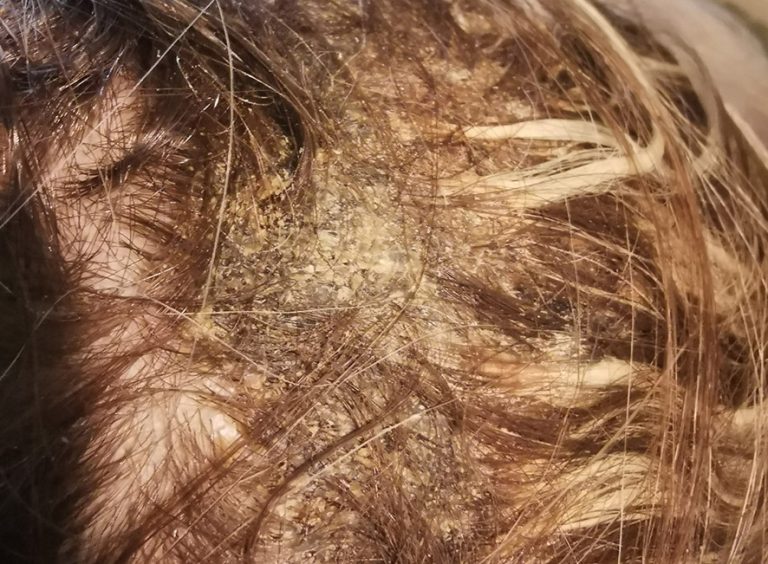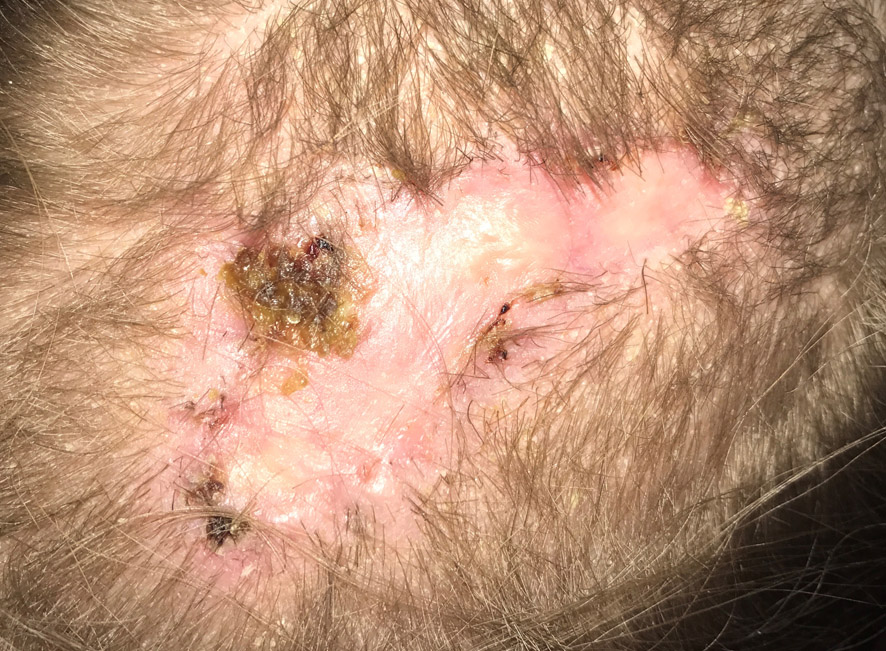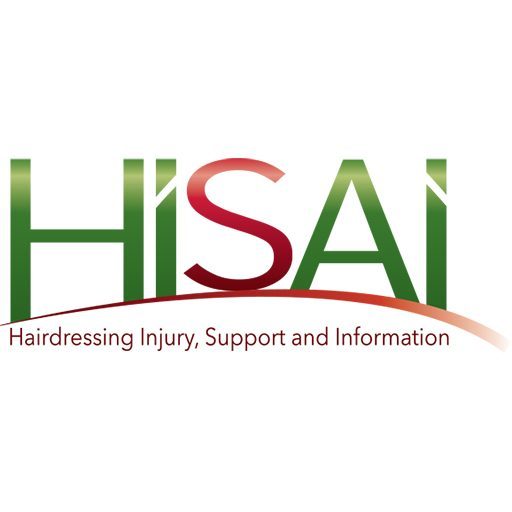Scalp Injury

Scalp injury is the extreme end of a spectrum of skin reactions that can occur at a hairdresser. Of course, physical injury such as abrasions and lacerations can occur from sharp tools but the primary aim of HISAI is to focus on hair damage and scalp reactions to products and techniques used.
It is important to acknowledge that hairdressers do not knowing set out to harm their clients and are often as shocked as the customer when something goes wrong. Often, due to a lack of knowledge, a potentially serious problem is not recognised initially and the client may be made to feel like they are over-reacting. Having a product applied to the hair or scalp should never be painful so if discomfort occurs, this should be taken seriously.
Contact Dermatitis
Contact dermatitis can be allergic or irritant although it can be difficult to differentiate between these and they can look the same.
Allergic reactions are either acute (within 24-48 hours) or require some days or months to become apparent. Such reactions are typically very itchy but can be ill-defined. The skin is usually reddened but blisters and oozing can sometimes develop. Allergic reactions often only occur if there has been a prior exposure to the allergen.
Irritant contact dermatitis is more often associated with burning or stinging as well as, or instead of, itching and can occur without any prior exposure to the product. The skin is usually reddened but the area involved may be more well defined than with an allergic contact dermatitis. If a chemical has come into contact with the skin then there can be a similar appearance but this would be considered a superficial epidermal chemical burn.
If contact dermatitis occurs then avoiding exposure to the product will usually lead to resolution although antihistamines may be helpful in allergic contact dermatitis and topical steroids might be required for more severe forms of irritant contact dermatitis.
Patch testing prior to having a hair product applied is aimed at ensuring that the client does not have an allergy to any of the components of the hair product and that no skin irritation occurs.


Scalp Burns
Burns to the scalp can be caused by chemicals, heat (thermal), electricity, radiation or friction.
At the hairdresser, a burn to the scalp would be most likely due to injury with a chemical agent.
Occasionally, a heat injury could be caused by a scald with hot liquid, a contact burn with a heated implement such as a hair straightener, or very hot air from a blow drier. An electrical injury would be very rare.
Chemical burns can be from an acid or an alkali. The injury from acid is known as coagulative necrosis whereas the injury from an alkali is known as liquefactive necrosis. The difference is that the damage from an alkali burn can continue for some time after contact with the chemical whereas the tissue injury from an acid occurs within a short time after contact with the chemical. Hair bleaches are alkalis.
Traditionally, the depth of a burn is referred to in 4 ‘degrees’ but modern terminology refers to the depth of the injury to the skin
- Superficial epidermal burn (1st degree) is where only the epidermis is damaged. The scalp will be painful, but not blistered. It is like a sunburn and will recover within a few days with no damage.
- Superficial partial thickness dermal burn (2nd degree) is where the epidermis and the upper dermis are damaged. The scalp will blister and if the blisters burst it will ooze but, if looked after properly, will heal within two weeks and without any loss of hair or scarring.
- Mid and deep dermal partial thickness burn (2nd degree) is where the epidermis and the deeper dermis are damaged. The scalp is likely to blister but may not. It may be very painful or painless depending on the depth of injury. There is likely to be oozing and it may take several weeks to heal. There may be loss of hair.
- Full thickness burn (3rd degree) is where the epidermis and the full thickness of the dermis are damaged. The scalp is unlikely to be painful initially and may be insensate to touch. The texture of the skin may also be leathery or waxy. After several days or weeks, the damaged scalp will change colour and start to separate leaving a wound that will take several weeks or months to heal depending on the size. There is likely to be permanent loss of hair in the damaged area.
- Deep full thickness (4th degree) is where there is damage to tissue beneath the skin (fat, muscle, bone). This would be unusual from a hairdressing injury.
Management of chemical burns
First aid for a chemical burn involves continuous irrigation with room-temperature running water for 20 minutes as soon as possible but still to be used regardless of the time since injury.
If a chemical burn has occurred at a hairdresser then it should be seen as soon as possible by a medical practitioner after first aid has been administered so that it can be assessed. Unfortunately, even then, the severity of an injury might be missed for some time. Referral to a burn service should be made for superficial partial thickness and deeper depth burns so that an accurate determination of severity can be made and recorded for medicolegal reasons. It is also important that the that burns deeper than superficial partial thickness are treated appropriately to prevent depth progression. Frequently the severity of a burn is missed because it is assessed initially by somebody who is not familiar with what deeper burns look like especially on the scalp where the presence of hair can confound the appearance.
A listing of burn services around the UK can be found on the British Burn Association website at https://www.britishburnassociation.org/uk-burns-services-2/


